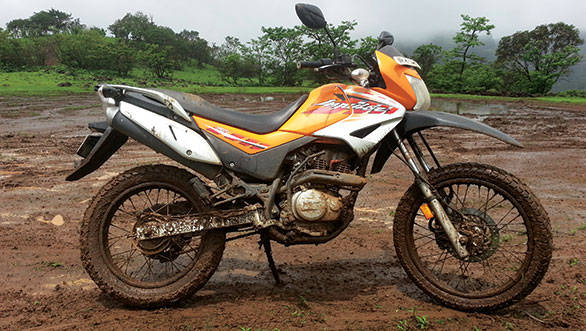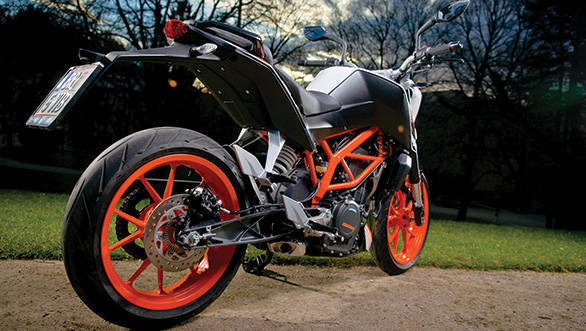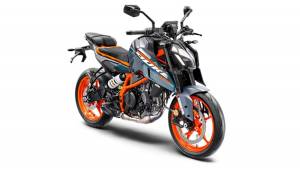Five things you need to understand about your vehicle's suspension
1. Why is it there at all?
If our roads were perfect, vehicles may not need suspension at all. But not for the reason you think. It wouldn't be needed not because you'll be comfortable without it but because the wheels would never leave the ground. Vehicles steer using their tyres and are propelled forward by the tyres as well. When these black things lose contact with the ground, the vehicle cannot be turned and it's speed cannot be controlled. That's really why suspension was added to machines - to maximise the amount of time the tyres stay in touch with the ground, to improve your control over them. The comfort thing? That's a pleasant and now important side effect.
2. Preload doesn't change the stiffness of the suspension
 The Hero Impulse has one of the most pliant suspensions on an Indian motorcycle
The Hero Impulse has one of the most pliant suspensions on an Indian motorcycle
Preload settings compress the suspension spring by a specific amount. In effect, it artificially compresses the spring by the amount placing a specific weight might have. The specific weight we are referring to is the weight of the rider of the motorcycle. Preload determines how much your suspension will compress when you sit on it. That's why heavy riders should select a harder preload setting - to maintain the vehicle's ride height and by extension its steering geometry and chassis behaviour. That's why ideally a two-up ride should begin with the selection of a harder preload setting. Altering the preload doesn't really change the suspension behaviour - it doesn't alter the spring rate (how much force will compress the spring by a given amount), the damping (how the hydraulics will control the rate at which the spring compresses), the rebound damping (how the hydraulics will control the rate at the which spring returns to it natural state after being compressed). It is these three things that determine the suspension's stiffness and by extension, effectiveness.
3. Messing around with suspension requires skill and knowledge
We see lots of people who think, for example, that replacing their OEM shock absorbers with the ones from some other bike will instantly solve all the issues. Chances are it'll make things worse unless you know what you're doing. All OEM suspension is designed to fit that one motorcycle. What that means is that the length of the suspension unit, the spring rates, the compression and rebound damping are all engineered to achieve the widest possible effectiveness range for the varying weights and use patterns of potential riders. Swapping suspension units willy-nilly doesn't work. That's why racers pay through their nose for highly tunable suspension and then for people who can tune this expensive suspension. Rather than order the OEM bits from the latest and greatest sportsbike and make it fit their current steeds.
4. Stiff suspension is over-rated
 The 390 Duke has a stiff suspension
The 390 Duke has a stiff suspension
We hear many people say that if the suspension on their bike was stiffer, it would feel better to ride. This is patently untrue. In racing, stiff suspension is required to ensure that the motorcycle's behaviour is predictable while the usually smooth racetrack takes away the need to absorb big bumps. But go to the Isle of Man, where the surfaces is far, far bumpier, and you'll hear all the racers discussing how much they backed off their suspension to make sure the bike can be fast. Yes, softer can be faster. You see, stiff setups usually mean that when the wheels come over a crest, the suspension can extend quickly enough from the compressed state to allow the tyre to continue down the slope without losing all contact with it. If this happens for a micro-second, that a micro-second during which you had no control over the contact patch. If you ride bumpy roads - we all do in the real world - chances are you'll be faster on a softer setup. Though when you do go to the racetrack, the softer setup might be a hindrance. The Honda CBR250R is a great example of this.
5. Suspension has a fixed life
Like many components on your bike, there comes a time when you have to retire your OEM suspension. Thankfully, this isn't a matter of a handful of years. But when that time comes, don't be shy, go ahead and get new units. It'll transform your motorcycle and sharpen up its reflexes as well as its comfort levels. Life's too short for you to be riding around on shagged suspension.
Starts Rs 1,64,143
250cc
6-Speed
26.50
22.90
-NA-














